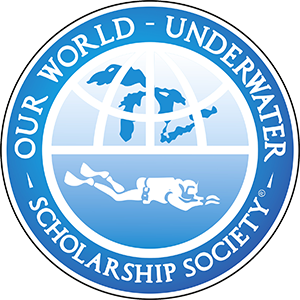Last year the previous scholar Mat Kertesz spent some time with some marine scientists from the University of Tasmania when they were starting the Reef Life Survey around Australia. This idea was from Graham Edgar, a prominent marine scientist and author of Australian Marine Life; the plants and animals of temperate Australia. Who over the years has been involved in many research projects, but is well known from his work around Australia documenting and surveying marine life particularly in Marine Protected Areas. The idea was that with such a large coastline around Australia, it is logistically impossible to have scientific teams documenting the changes in our marine environment all around our coastline. So by training experienced and motivated recreational SCUBA divers to collect data using the same scientific methods, useful data on marine biodiversity over broad spatial and temporal scales can be recorded and made easily available to the public, scientists and managers all around Australia and the world.
The Reef Life Survey is run by a lovely couple, Rick and Jemina Sturt-Smith. Over the years they have travelled extensively around Australia teaching keen divers the techniques of the Reef Life Survey. From Lord Howe Island to the Abrolhos Islands and all around the southern coastline, there are now teams of divers collecting useful data all around Australia and establishing close linkages between recreational divers, research scientists, and coastal managers. This information can be used to track long term impacts of climate change, assessing invasive species, identifying anthropogenic threats and to track population trends for threatened species.
The training that I was involved in was much closer to home than some of my other adventures, Sydney Harbour. So on the 26th March a team of Divers met at Chowder Bay for the upcoming four days of Reef Life Surveys. We were diving through Plunge Dive, with two days on the boat and two from the shore. I had already a fair bit of experience with marine life surveys, but it was good to see the enthusiasm that the other divers had for learning how to do scientific fish counts and identifying all the marine life that we happened to come across. The technique was to use a 50 m transect (tape measure) and record all fish seen in a 5 m band on both sides of the tape. Then swim next to the tape and record all mobile invertebrates and cryptic fish in a 1 m band on both sides. Habitat was also recorded from digital photos taken every 5 m. So we all had to brush up on our identifications before recording this data into the computer using scientific names, which was a steep learning curve for some!
Over the eight dives we came across a good diversity of marine life that abounds in Sydney Harbour, highlights were an anglerfish, a large school of kingfish in shallow water, angel shark, giant boarfish, octopus, squid, inquisitive cuttlefish and a bunch of tropical visitors that frequent the harbour during these warmer months, including moorish idols, butterflyfish and tiny yellow boxfish. If anyone is keen to be a part of the Reef Life Survey and perform ongoing fish surveys in their local area, check out the website www.reeflifesurvey.com. You could be part of the team and collaborate with some fun and experienced divers all over Australia!













I have been searching for the ID of one of your pictured species. The “blenny in a bottle”. I found this species on a dive in Sydney and its specific identification eludes me. The closest I can find is petroscirtes fallax, but that species has 3 lateral black lines where as the one I saw and yours doesnt. Mine was hiding in an old cunjivoi and proceded to exit and dance vertically in front of my mask. Perhaps in an attempt to intimidate me. This was in approximately 3m of water. Amazing species. Also my congrats on a good sight and something I would be interested in doing.